Dirk Olonscheck
| Department | Climate Dynamics |
| Group | Director's Research Group (CDY) |
| Position | Research Scientist |
| phone | +49 40 41173-129 |
| dirk.olonscheck@mpimet.mpg.de | |
| Room | B 309 |
Publications
4) Olonscheck, D., Raddatz, T., Kang, S., "Two-phase transition of CO2-driven equatorial Pacific warming pattern governed by ocean dynamics and regional forcing", in review
3) Beobide-Arsuaga, G., L. Suarez-Gutierrez, A. Barkhordarian, D. Olonscheck, J. Baehr, "Increasing central and northern European summer heatwave intensity due to the forced internal variability changes", in review
2) Thorne, P. W., et al. (including D. Olonscheck), "How well can we quantify when 1.5°C of global warming has been exceeded?", in preparation
1) *Aru, H., D. Olonscheck, J. Marotzke, C. Li, "Observed fingerprint of global warming", in preparation
* indicates (co-)advised researchers or students
19) *Dhame, S., D. Olonscheck, and M. Rugenstein (2025), "Higher resolution climate models do not consistently reproduce the observed tropical Pacific warming pattern", J. Climate, 38, 3131–3149, doi.org/10.1175/JCLI-D-24-0248.1
18) Olonscheck, D., and F. S. Hanf (2024), "Are Recently Observed Heavy Precipitation Extremes Realistically Represented by State-of-the-Art Spatial Resolutions of Global Climate Models?" In: Engels, A.; J. Marotzke; B. Ratter; E. G. Gresse; A. López-Rivera; A. Pagnone; J. Wilkens (eds.); 2024. Hamburg Climate Futures Outlook 2024. Conditions for Sustainable Climate Change Adaptation. Cluster of Excellence “Climate, Climatic Change, and Society” (CLICCS), pp. 79-83. transcript Verlag, Bielefeld, doi.org/10.14361/9783839470817
17) Olonscheck, D., L. Borchert, and A. Deroubaix (2024), "Single-Model Initial-Condition Large Ensembles Quantify Internal Climate Variability and its Changes." In: Engels, A.; J. Marotzke; B. Ratter; E. G. Gresse; A. López-Rivera; A. Pagnone; J. Wilkens (eds.); 2024. Hamburg Climate Futures Outlook 2024. Conditions for Sustainable Climate Change Adaptation. Cluster of Excellence “Climate, Climatic Change, and Society” (CLICCS), pp. 75-78. transcript Verlag, Bielefeld, doi.org/10.14361/9783839470817
16) Olonscheck, D., and M. Rugenstein (2024), "Coupled climate models systematically underestimate radiation response to surface warming", Geophys. Res. Lett., 51, e2023GL106909, doi:10.1029/2023GL106909
15) Timmreck, C., D. Olonscheck, A. P. Ballinger, R. D’Agostino, S. Fang, A. P. Schurer, and G. C. Hegerl (2024), "Linearity of the Climate Response to Increasingly Strong Tropical Volcanic Eruptions in a Large Ensemble Framework", J. Climate, 37, 2455–2470, doi:10.1175/JCLI-D-23-0408.1
14) Barkhordarian, A., D.M. Nielsen, D. Olonscheck, and J. Baehr (2024), "Arctic marine heatwaves forced by greenhouse gases and triggered by abrupt sea-ice melt", Nat. Commun. Earth Environ. 5, 57, doi:10.1038/s43247-024-01215-y
13) Rugenstein, M., *S. Dhame, D. Olonscheck, R. J. Wills, M. Watanabe, and R. Seager (2023), "Connecting the SST Pattern Problem and the Hot Model Problem", Geophys. Res. Lett. 50, e2023GL105488, doi:10.1029/2023GL105488
12) Olonscheck, D., Suarez-Gutierrez, L., Milinski, S., Beobide-Arsuaga, G., Baehr, J., Fröb, F., Ilyina, T., Kadow, C., Krieger, D., Li, H., Marotzke, J., Plésiat, É., Schupfner, M., Wachsmann, F., Wallberg, H., Wieners, K.-H., Brune, S. (2023), "The new Max Planck Institute Grand Ensemble with CMIP6 forcing and high-frequency model output". J. Adv. Model. Earth Syst., 15, e2023MS003790, doi:10.1029/2023MS003790
11) Schmidt, G. A., T. Andrews, S. E. Bauer, P. J. Durack, N. G. Loeb, V. Ramaswamy, N. P. Arnold, M. G. Bosilovich, J. Cole, L. W. Horowitz, G. C. Johnson, J. M. Lyman, B. Medeiros, T. Michibata, D. Olonscheck, D. Paynter, S. P. Raghuraman, M. Schulz, D. Takasuka, V. Tallapragada, P. C. Taylor, and T. Ziehn (2023), "CERESMIP: a climate modeling protocol to investigate recent trends in the Earth’s Energy Imbalance". Front. Clim. 5:1202161. doi: 10.3389/fclim.2023.1202161
10) Olonscheck D., A. Schurer, L. Lücke, and G. Hegerl (2021), "Large-scale emergence of regional changes in year-to-year temperature variability by the end of the 21st century", Nat. Commun. 12, 7237, doi: 10.1038/s41467-021-27515-x
9) Milinski, S., N. Maher, and D. Olonscheck (2020), "How large does a large ensemble need to be?", Earth Syst. Dynam., 11, 885–901, doi:10.5194/esd-11-885-2020
8) Keil P., T. Mauritsen, J. Jungclaus, C. Hedemann, D. Olonscheck, and R. Ghosh (2020), "Multiple Drivers of the North Atlantic Warming Hole", Nat. Climate Change 10, 667–671, doi:10.1038/s41558-020-0819-8
7) Olonscheck, D., M. Rugenstein, and J. Marotzke (2020), "Broad consistency between observed and simulated trends in sea surface temperature patterns", Geophys. Res. Lett. 47, 1-10, doi:10.1029/2019GL086773
6) Li Y., D. Thompson, and D. Olonscheck (2020), "A basic effect of cloud radiative effects on tropical sea-surface temperature variability", J. Climate 33, 4333-4346, doi:10.1175/JCLI-D-19-0298.1
5) Maher N., S. Milinski, L. Suarez-Gutierrez, M. Botzet, L. Kornblueh, Y. Takano, J. Kröger, R. Ghosh, C. Hedemann, C. Li, H. Li, E. Manzini, D. Notz, D. Putrasahan, L. Boysen, M. Claussen, T. Ilyina, D. Olonscheck, T. Raddatz, B. Stevens, and J. Marotzke (2019), "The Max Planck Institute Grand Ensemble – Enabling the Exploration of Climate System Variability", J. Adv. Model. Earth Syst. 11, 2050-2069, doi:10.1029/2019MS001639
4) Olonscheck D., T. Mauritsen, and D. Notz (2019), "Arctic sea-ice variability is primarily driven by atmospheric temperature fluctuations", Nat. Geoscience 12, 430-434, doi:10.1038/s41561-019-0363-1
3) Olonscheck, D. (2018), "Understanding internal variability of sea ice and surface air temperature", PhD Thesis, University of Hamburg, doi:10.17617/2.2639899
2) Olonscheck D., and D. Notz (2017), "Consistently Estimating Internal Climate Variability from Climate Model Simulations", J. Climate 30, 9555-9573, doi:10.1175/JCLI-D-16-0428.1
1) Olonscheck D., M. Hofmann, B. Worm, and H. J. Schellnhuber (2013), "Decomposing the effects of ocean warming on chlorophyll a concentrations into physically and biologically driven contributions", Environ. Res. Lett. 8, 014043, doi:10.1088/1748-9326/8/1/014043
* indicates (co-)advised researchers or students
2) Humphrey, V., A.L. Merrifield, J. Rogelj, R. Lamboll, D. Olonscheck, T. Mauritsen, A. Ribes & R. Knutti (2023), "Climate sensitivity, TCRE, and its role in projections", Knowledge Gains: Summary and Implication Report. The CONSTRAIN Project.
1) Andrews, T., T. Mauritsen, D. Olonscheck, D. Smith, and T. Toniazzo (2022), "Interaction of ocean heat uptake and radiative feedback change via SST-pattern change over recent decades", Knowledge Gains: Summary and Implication Report. The CONSTRAIN Project.
Curriculum Vitae
since 2023 Research Scientist at Max Planck Institute for Meteorology, Germany (Mentor: Sarah Kang)
2019-2023 PostDoc at Max Planck Institute for Meteorology, Germany, EU project CONSTRAIN (Mentors: Maria Rugenstein, Jochem Marotzke)
2020 Alexander-von-Humboldt Postdoctoral Fellow at the University of Edinburgh, UK (Mentor: Gabriele Hegerl)
2018 - 2019 PostDoc at Max Planck Institute for Meteorology, Germany (Mentor: Dirk Notz)
2018 Scientific Expedition to the Arctic on research vessel Polarstern
2015 - 2018 Ph.D. in Earth Sytem Modelling at Max Planck Institute for Meteorology, Fellow of the International Max Planck Research School on Earth System Modelling, Germany (Supervisors: Dirk Notz, Thorsten Mauritsen)
2014 - 2015 Research Scientist at Max Planck Institute for Meteorology, Germany
2012 - 2014 Master of Science in Atmospheric and Climate Science at Swiss Federal Institute of Technology (ETH) Zurich, Switzerland (Supervisors: Jan Sedláček, Reto Knutti)
2011 - 2013 Guest Scientist at the Potsdam Institute for Climate Impact Research, Germany
2009 - 2012 Bachelor of Science in Geoecology at University of Potsdam, Germany and University College London, UK
2009 Scientific Expedition to the Arctic on research vessel Polarstern
Teaching & Supervision
Grundlagen für Meteorologie und Klima, Lecture Weather and Climate Extremes, BSc course, Winter semester, 2023/2024, 2024/2025
Mentoring of Postdoctoral Researchers
- Aruhasi, 2023 - present
- Shreya Dhame, 2022 - 2024
Member of PhD advisory and/or examination committee
- Alec Sherrill, 2024 - present (jointly with Alfred Wegener Institute)
- Siân Chilcott, 2024 (jointly with University of Melbourne & University of Hamburg)
- Daniel Burt, 2024
- Celine Gieße, 2023
Supervision of Master students
- Jhanvi Kumar, MSc student, 2023 - 2024
- Alec Sherrill, MSc student, 2022
Research Highlights
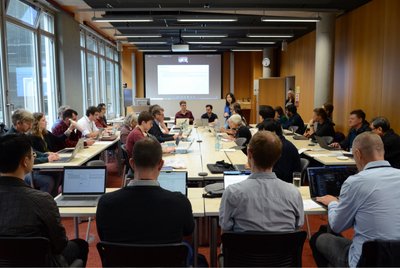
Solving the Pacific Puzzle: TROPICS workshop meets at MPI-M

Hamburg Climate Futures Outlook 2024
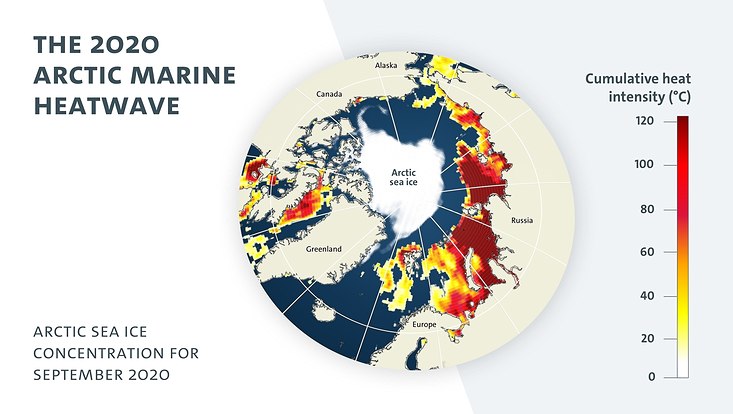
Arctic marine heatwaves forced by greenhouse gases and triggered by abrupt sea-ice melt
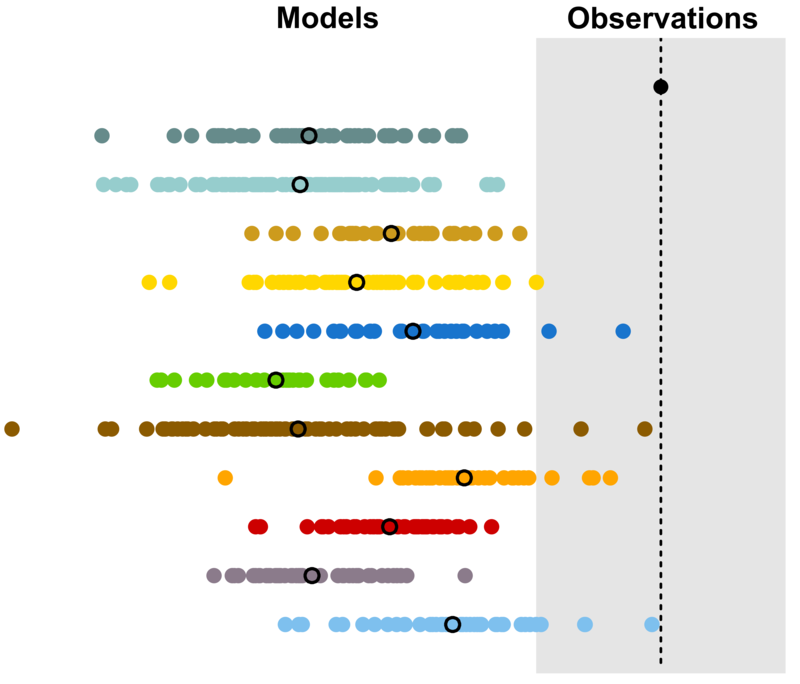
Coupled climate models systematically underestimate the radiation response to surface warming
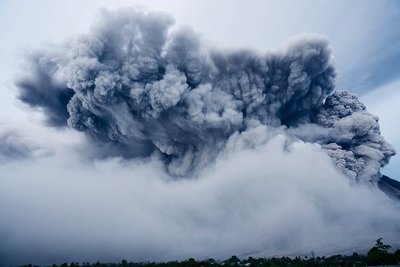
Linear climate response to idealized tropical volcanic eruptions

The Max Planck Institute for Meteorology Grand Ensemble – an instrument for studying the internal variability of the climate system
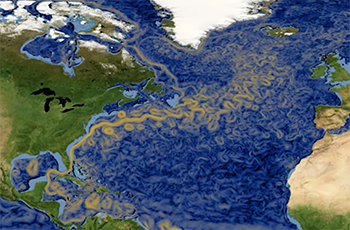
Multiple drivers of the North Atlantic warming hole
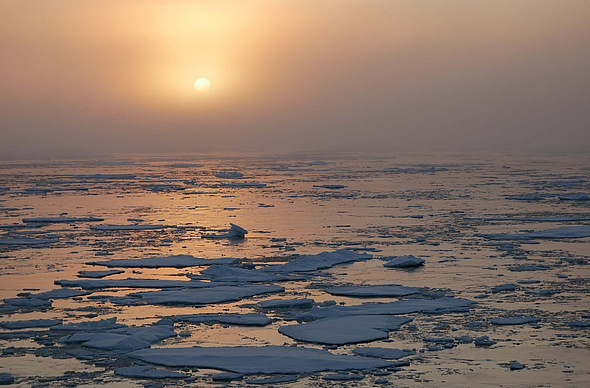
Cause for variability in Arctic sea ice clarified
Other Research Topics
Single-model initial-condition large ensembles are powerful tools to quantify the forced response, internal climate variability, and their evolution under global warming. I present the CMIP6 version of the Max Planck Institute Grand Ensemble (MPI-GE CMIP6). The ensemble has currently 30 realisations for the historical period and for each five emission scenarios. The power of MPI-GE CMIP6 goes beyond its predecessor ensemble MPI-GE CMIP5 (Maher et al., 2019) by providing high-frequency output, the full range of emission scenarios including the highly policy-relevant low emission scenarios SSP1-1.9 and SSP1-2.6, and the opportunity to compare the ensemble to complementary high-resolution simulations. I evaluate the new ensemble with observations and reanalyses, and compare it to MPI-GE CMIP5. I further demonstrate with six application examples how to use the power of the ensemble to better quantify and understand present and future climate extremes, to inform about uncertainty in approaching Paris Agreement global warming limits, and to combine large ensembles and artificial intelligence. For instance, MPI-GE CMIP6 allows one to show that the recently observed Siberian and Pacific North American heatwaves would only avoid reaching 1-2 year return periods in 2071-2100 with low emission scenarios, that recently observed European precipitation extremes are captured only by complementary high-resolution simulations, and that 3-hourly output projects a decreasing activity of storms in mid-latitude oceans. Further, the ensemble is ideal for estimates of probabilities of crossing global warming limits and the irreducible uncertainty introduced by internal variability, and is sufficiently large to be used for infilling surface temperature observations with artificial intelligence.
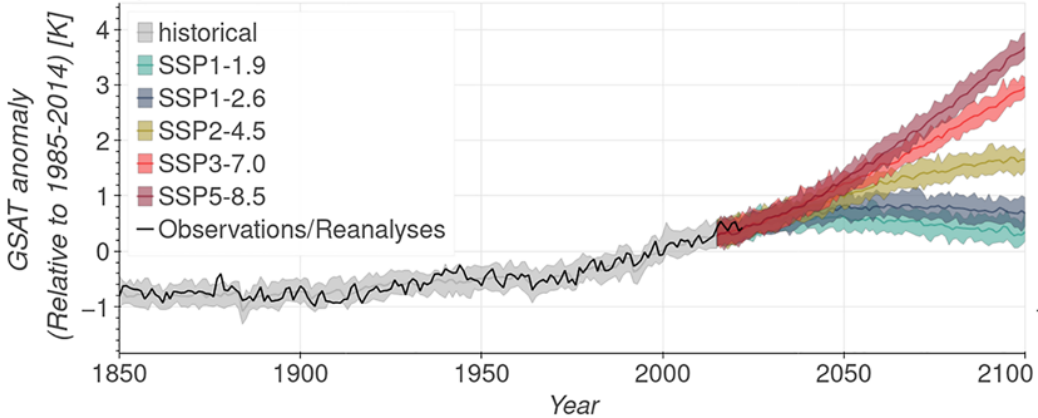
I here show that observed and simulated trends in sea surface temperature (SST) patterns are globally consistent when accounting for internal variability. Some individual ensemble members of single-model initial-condition large ensembles simulate trends in large-scale SST patterns that closely resemble the observed ones. Observed regional trends that lie at the edge of the simulated distribution of internal variability - such as for the tropical Pacific east-to-west SST gradient - are hard to interpret. The observed trends could be an unusual realization of the Earth's possible behavior and/or the models are systematically biased but large internal variability leads to good matches with the observations.
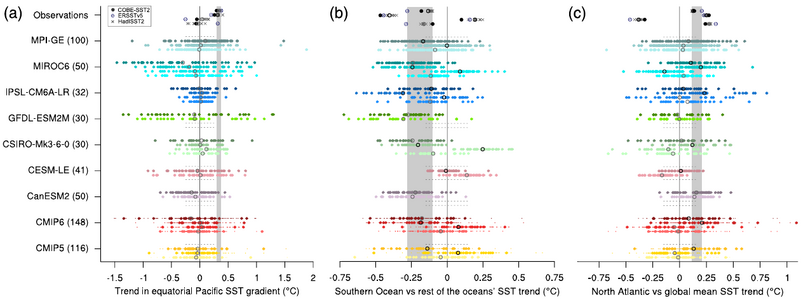
I show that human-caused changes in internal year-to-year temperature variability are expected to emerge from the unforced range by the end of the 21st century. This emergence is shown based on climate model initial-condition large ensembles forced with strong global warming scenarios. I reveal that different simulated changes in globally averaged temperature variability between models can be explained by a trade-off between strong increases in variability on tropical land and substantial decreases in high latitudes. This latitudinal pattern of temperature variability change is consistent with the observed and projected loss of sea ice in high latitudes and changes in vegetation cover in the tropics. Instrumental records support this emerging pattern, but have data gaps in key regions. Comparison of the model output with paleoclimate proxy reconstructions supports the simulated magnitude and distribution of temperature variability. The findings strengthen the need for urgent mitigation to avoid unprecedented changes in temperature variability.
Reference: Olonscheck et al. (2021), Large-scale emergence of regional changes in year-to-year temperature variability by the end of the 21st century, Nature Communications, featured as Editors’ Highlights (Climate Change Impacts).

I investigate how internal climate variability changes under global warming. To do so, I develop a new method that relates the preindustrial internal variability to the internal variability for a changing forcing. The estimate for the forced time period is derived from the ensemble spread of single-model ensembles of a multi-model ensemble. This practically applies the quasi-ergodic assumption, and allows one to assess whether the range of internal variability of any climate variable is projected to change.
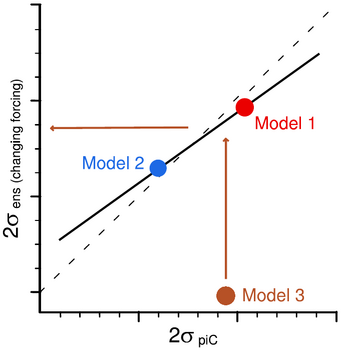
Climate extremes often have substantial impacts on society. However, it is unclear, how and why they will change in the future. Using an empirical threshold approach, I quantitatively attribute the future probability of changes in daily temperature, wind and precipitation extremes to anthropogenic global warming and associated changes in internal variability. I show that this different origin of future changes in climate extremes is important, because their origin determines the frequency and intensity of extremes. This is because climate extremes are, on average, much more severe when caused by an increased variability than when caused by a mere shift in the mean climate.
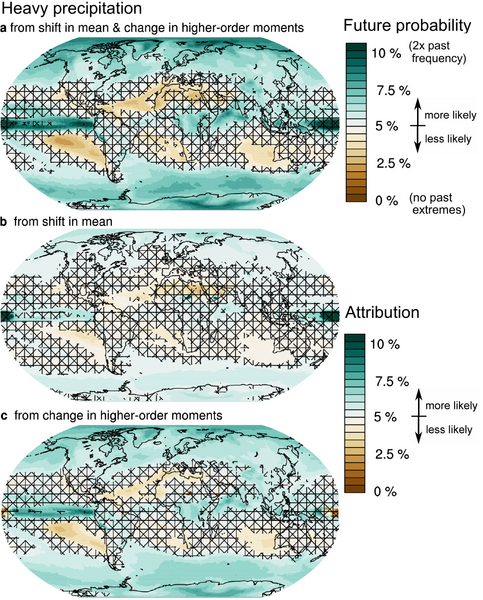
I communicate my research, and our knowledge on the polar climate and climate variability by giving talks in schools and by demonstrating small physical experiments at public events. Together with colleagues, I also developed the strategy board game "Cold Cooperation" that highlights the challenge of international cooperation to both satisfy partial interests of individual countries and to avoid the most dramatic consequences of global warming. The game can be downloaded here: owncloud.gwdg.de/index.php/s/n8tghGRSGg74Hn0

